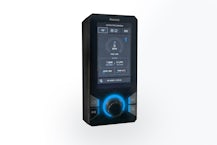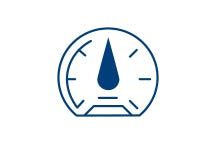- Guides
A Guide to Drain Jetting Nozzles

INTRODUCTION
Rioned supplies a wide range of nozzles for every type of machine. Our extensive range of jetting nozzles clears all types of blockage in drains up to 650mm.
There are two main categories of nozzles; radial jetting nozzles are optimized for unblocking of drains, while rotating nozzles are designed for cleaning. The static jet streams of radial nozzles have maximum traction power due to their rear-facing nozzles. The jets in rotating jetting nozzles have a 360° wide reach to clean the entire pipe wall. They are often used to provide extra cleaning after unblocking a drain to prevent the formation of new blockages.
JETTING NOZZLES 101
Drain cleaning tasks require different nozzles and jetting techniques. Here are five key pointers.
1. Understanding the Conditions for Jetting:
As a starting point, it’s important to understand the conditions for jetting, including the pipe diameter, length, structural material and the type of deposits present, such as F.O.G. (Fats, oil and grease).
2. Importance of Pressure and Flow in Jetting:
The pressure and flow of the jetter is also key. As a general ~rule, high pressure (PSI) is better for clearing blockages, whereas high flow (GPM) is preferable for moving material. While high-pressure and a low flow rate is most effective for small drain cleaning, high-flow machines are better suited for use on larger-diameter pipes.
3. Determining the Jet Hole Size in a Nozzle:
To determine the ideal size for the jet holes in a nozzle, the pressure and flow of the jetting equipment, along with the length and diameter of the hose, is required. Reputable nozzle sellers will require this information about your jetting
equipment to configure the correct nozzle.
4. Trajectory and Angle of Jets:
The trajectory and angle of the jets is important in nozzle selection. Jet angles range from 0° to 45°, with a wider jet trajectory best suited to cleaning pipe walls. Narrower jets primarily offer rear thrust and forward force, useful in the efficient clearing of obstacles. On some jobs, more than one nozzle may be needed, though many modern nozzles have angled jets that perform multiple functions.
5. Choosing the Right Nozzle:
Selecting the right nozzle is a critical step in ensuring the efficiency, safety, and longevity of the jetting system. The nozzle is the point of contact between the water and the obstruction, so choosing the right nozzle is essential to remove the blockage and effectively clean the pipes. Taking into account the pressure and flow of the jetting equipment, the length and diameter of the hose, and the type of fluid or chemical being used, will ensure that the nozzle is suitable and will help to improve the overall work efficiency.
TYPES OF SEWER JETTING NOZZLES
The static jet streams of radial nozzles have maximum traction power due to their rear-facing nozzles, whilst the jets in rotating jetting nozzles have a 360° wide reach to clean the entire pipe wall. They are often used to do extra cleaning after unblocking a drain to prevent the forming of new blockages. There are speciality nozzles to clear drains from different contaminates like F.O.G. (Fat, Oil, Grease), soap or urine scale. Others are equipped with chains or steel wires to handle the most difficult jobs like the descaling of lime, cement or concrete, hard grease and tree roots.
FLUSHING + PENETRATING JETTING NOZZLES
Also known as ‘Fixed’ nozzles, flushing or penetrating nozzles are available in ‘Open’ or ‘Blind’ configurations with forward and rear, or rear only jets that are drilled to suit the pressure and flow of the jetter. Flushing nozzles feature wider rear jets to help clear debris, whereas penetrating nozzles have narrower rear jets to aid propulsion down the pipe. The forward jets, along with a wide variety of specialist nozzle body shapes, are designed to cut through common obstacles and blockages found in drains and sewers.
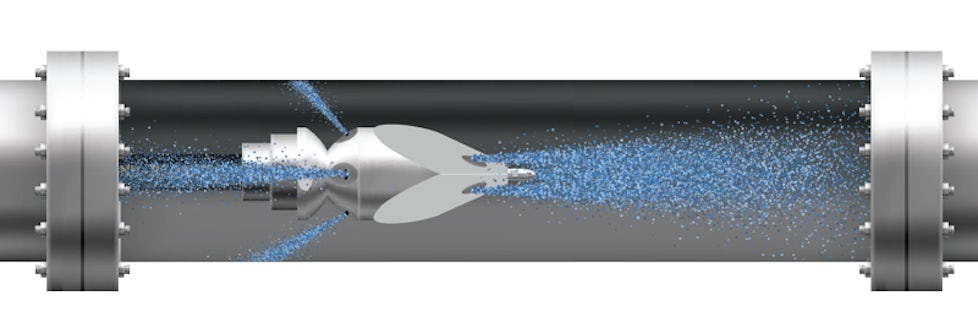
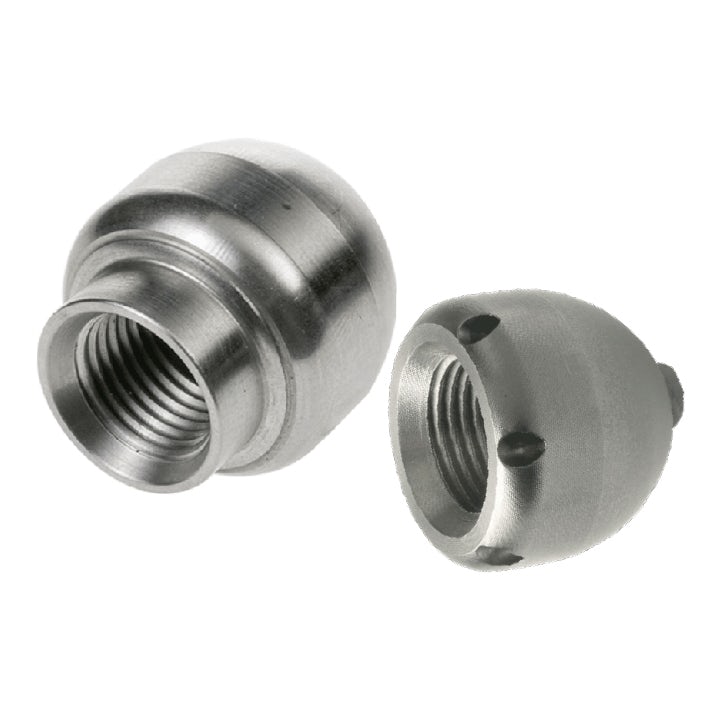
STANDARD NOZZLES
Low-cost standard nozzles are often used in an exploratory capacity. They can be configured as either ‘open’ for penetration and flushing or ‘blind’ for flushing tasks only.
Hose Connections: 1/4”, 3/8”, 1/2”, 3/4”, 1”
Types: Standard, Button, High Efficiency
View Standard Nozzles
UNBLOCKING NOZZLES
Featuring powerful forward jets and specially shaped heads to remove the range deposits found in drain and sewers. Some are designed for better traction and propulsion to send the nozzle faster down the line.
Hose Connections: 1/4”, 3/8”, 1/2”, 3/4”, 1”
Types: Chisel Point, Rocket, Rotary Jet
View Unblocking Nozzles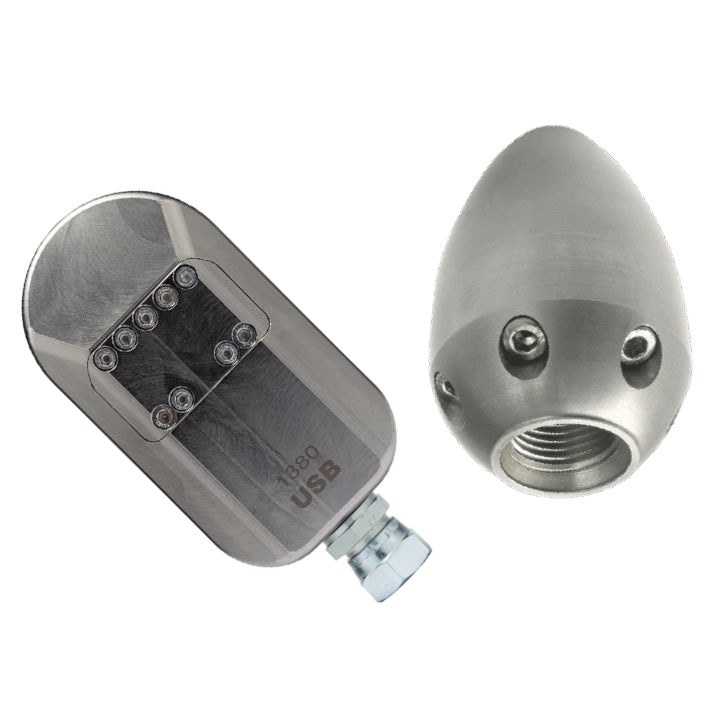
CLEARING NOZZLES
Powerful rear jets make Bomb Jet nozzles ideal for flushing materials from the pipe walls. Plough Jets are flat in design and lie in the bottom of the pipe to remove silt deposits.
Hose Connections: 1/4”, 3/8”, 1/2”, 3/4”, 1”
Types: Bomb Jets, Plough Jets
View Clearing NozzlesROTATING NOZZLES
One of the most effective tools available are nozzles that feature a rotating head with multiple jets that are designed to spray in all directions. This allows for comprehensive cleaning and clearing of the drain. These nozzles are considered to be the best option for multi-purpose drain cleaning, and are often used to tackle even the most stubborn blockages. Additionally, they are also frequently utilised in maintenance contracts, as they can be highly effective in preventing future blockages from forming.
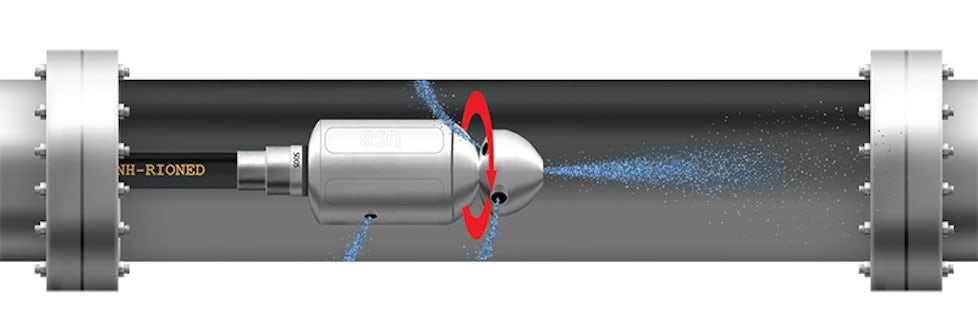

MULTI-PURPOSE NOZZLES
Rotating nozzles offer all-round cleaning and are widely used for multiple types of tough drain cleaning and clearing tasks. They typically comprise of three components; a propulsion unit, a drive and a cleaning head. Controlled rotation allows for optimal wall-to-wall cleaning power, while keeping the nozzle centred in the pipe. The latest rotating nozzles are designed using 3D fluid mechanics to maximise propulsion and mimimise water usage. Hardened steel nozzles of this kind also offer better longevity.
Hose Connections: 1/4”, 1/2”, 3/4”, 1”
Types: Warthog Nozzles, USB Primus
View Rotating NozzlesSPECIALIST NOZZLES
Specialist nozzles are an essential tool for drain cleaning professionals, as they can be used for a wide range of tasks. These nozzles are specifically designed to tackle some of the most challenging blockages and deposits that can form in a drain. The most common uses of specialist nozzles include desilting, which involves removing silt and sediment, root cutting, which is used to remove tree roots that can cause blockages and damage to pipes, and the removal of hardened deposits that can form on the walls of drains.

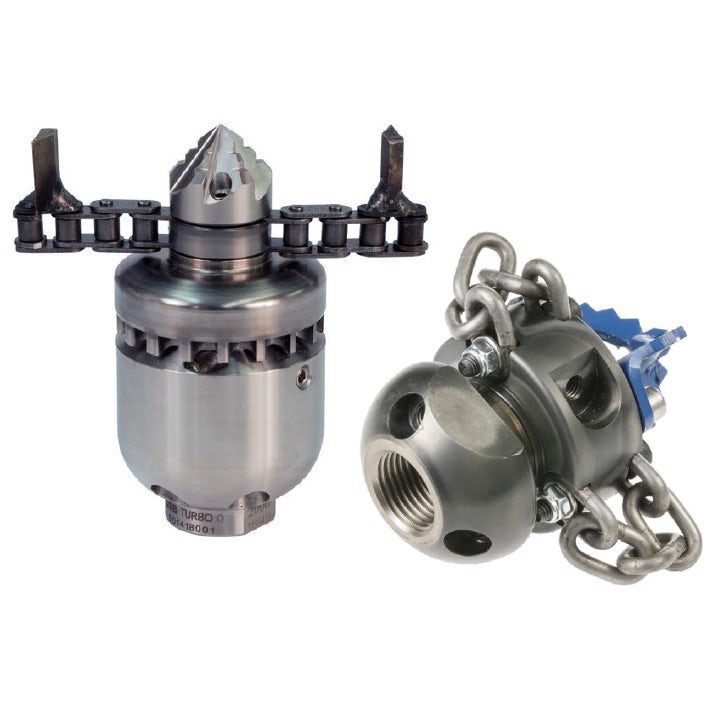
CHAIN FLAIL CUTTERS
Chain cutters commonly use turbine technology to deliver powerful cutting power to tackle the most difficult obstructions. Chain kits may include skid or sledge mounts to centralise and guide the cutter along the pipe. This offers the most effective cleaning when using the correct cutter size as the rotating cutting chains cover the entire pipe wall. Chain cutters may feature a drill point head and are often supplied in kits with a range of cutting and drilling tools. These typically include:
Link chains: for hardened blockages (limescale, cement or concrete)
Industrial chains: for grease and small roots
Steel wires: for scraping the pipe walls clean
Hose Connections: 1/2”, 1”
Chains sizes: 100 / 125 / 150mm
View Chain Flail Cutters
ROOT CUTTERS
Root cutters that use hydraulic power to drive the circular saw are widely used in the drainage sector and offer a proven solution for removing roots, hard grease and compacted sand or soil from blocked drains. Root cutters are typically supplied in a kit, which consists of the hydraulic body, a range of cutting knives and matching skids to keep the cutters centralised in the drain. The knives have sharp angular teeth at front and rear. Contractors may use root cutting as part of an ongoing maintenance scheme, particularly on larger sewers where the service interruption caused by roots permanently damaging the pipe outweighs the cost of regular maintenance.
Hose Connections: 1/2”, 1”
Types: Hydraulic root cutters
View Rootcutters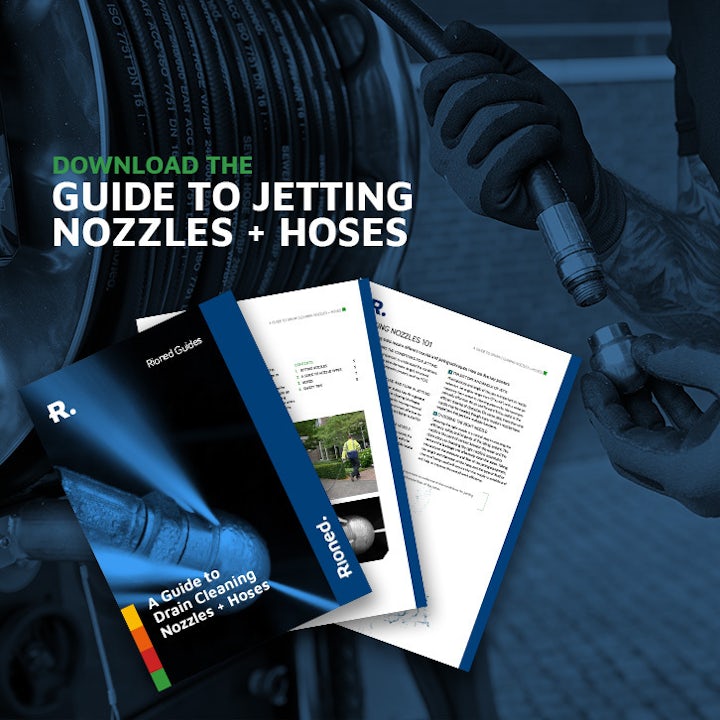
Download the Guide
For a more detailed guide to sewer jetting nozzles and hoses, please download our latest guide.
For more information on our range of nozzles and hoses visit the webstore
Download the Guide- Guides




